Tomatoes, Potatoes, and Tadpoles!
July was a crazy-busy month. I thought it would be calmer with only a few things growing during our hot, steamy summer, but I was in for several surprises.
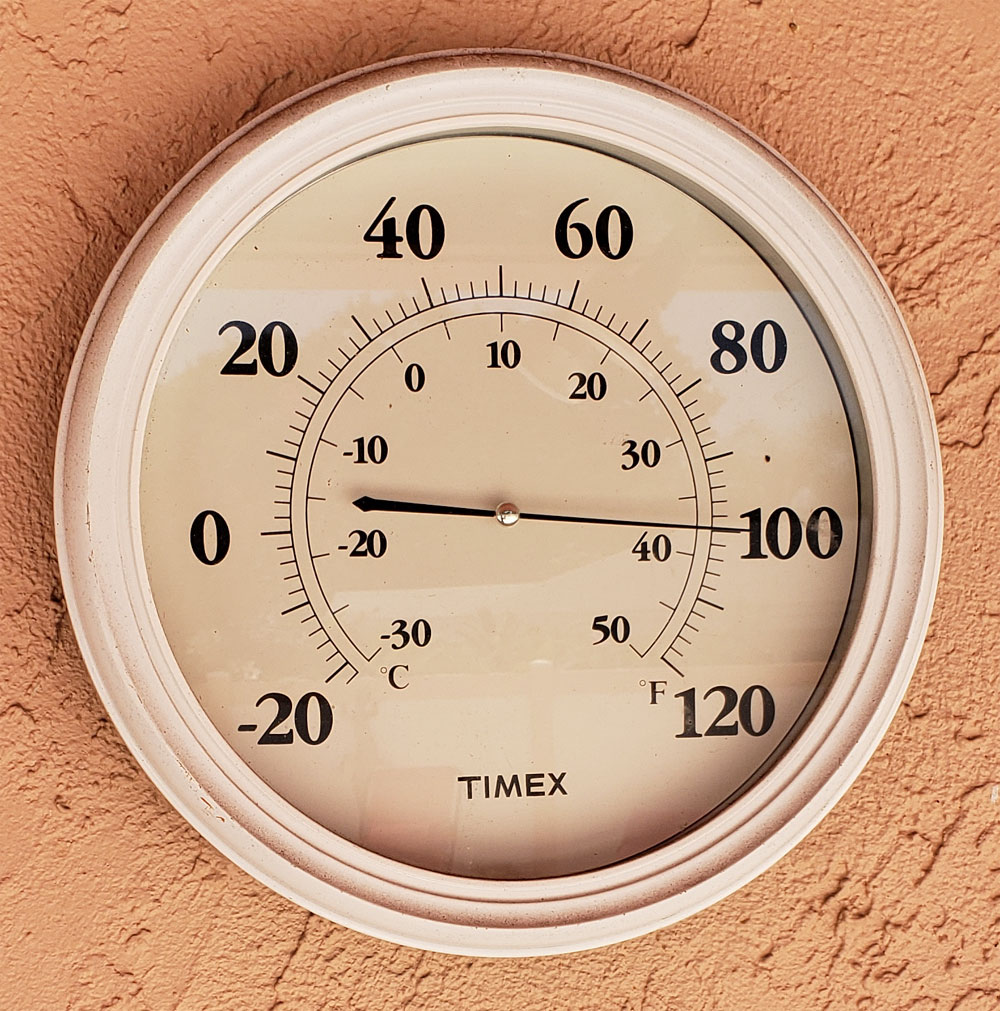
Journal Entries
July 1st “Looks like the tomatoes are slowing down for good.”
The overall tomato production dropped to almost zero once we hit consistent 90 degree-plus temperatures. We were also going through several dry days in a row. I started picking the tomatoes early to finish ripening on my kitchen counter.

Despite the demise of the tomatoes, many plants were thriving. Sweet potato vines were spreading everywhere, the blackberry bush looked out of control and the jalapeno peppers were getting their blossoms on.
July 4th “We put the flags out after cutting the lawn.”
Every patriotic holiday we put out small flags along our sidewalk. They were quite droopy this year because It rained most of the afternoon and evening. The wind brought down a large branch of a neighbor’s oak tree. The branch was about as big around as my thigh. We trimmed the smaller branches off and took two truckloads home to shred for mulch. We stirred some of the chipped mulch into the compost pile with the fresh-cut lawn clippings. The extra mulch we put around the flower beds.
July 7th “Picked 12 cherry tomatoes and found a new seed company.”
A welcome surprise, the cherry tomatoes were getting dark green fruits again in medium size clusters. There were a lot of blossoms coming on too.
Several You-Tubers we watch had mentioned Hoss Tools as a supplier for their seeds and gardening tools. We found everything we need to garden at their website: hosstools.com. I ordered two types of tomatoes, Brickyard and Homestead, early cabbage, and Contender bush beans. I was happy to find a supplier with varieties for sale that would grow well in my region.
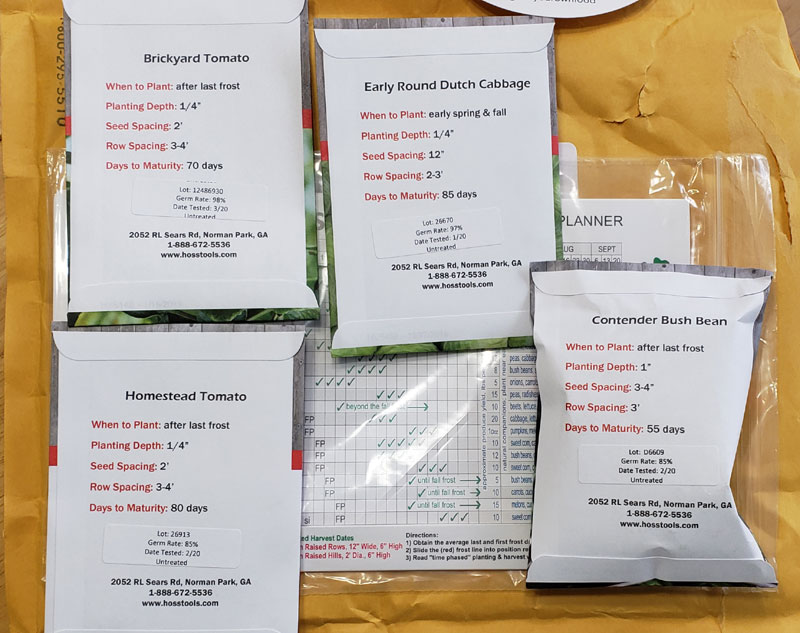
July 16th “The pumpkins are up!”
It’s recommended to start growing pumpkins in July here in Central Florida. I planted six seeds and they all came up in a few days. I moved them from seed starting trays to small pots outside.

Hardening off seedlings in July is backwards to in the spring. Plants need to get used to the hotter soil and weather instead of cooler when they’re set outside. I put them in a shady part of the garden and will plant them in the ground when they look strong enough to survive the upcoming August heat.
July 18th “Frog eggs!”
Sunday morning, we found hundreds of frog eggs in one of our five-gallon buckets that we use to collect rain water for potted plants. We left them there and the following day they had hatched into a massive group of swimming tadpoles. They were eating all of the algae growing on the side of the bucket. By the next day the bucket was clean. The hungry tadpoles obviously needed more to eat. We divided them into two buckets that also had algae growing on the sides. Within 48 hours, they had eaten all the algae and we had run out of buckets. It was time to release them into the wild.
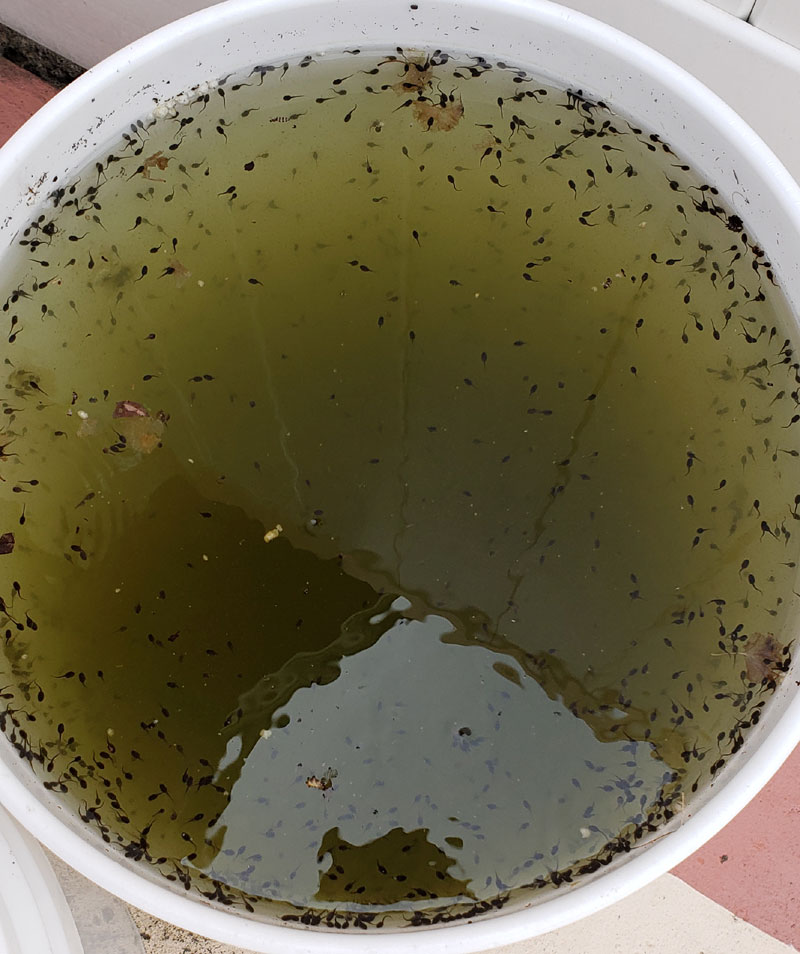
We gathered them with a strainer into a smaller bucket of water and drove to a nearby lake to release them. We gently poured them into the lake near some grassy shallows. It was fun and satisfying to watch them swim off into their new home.
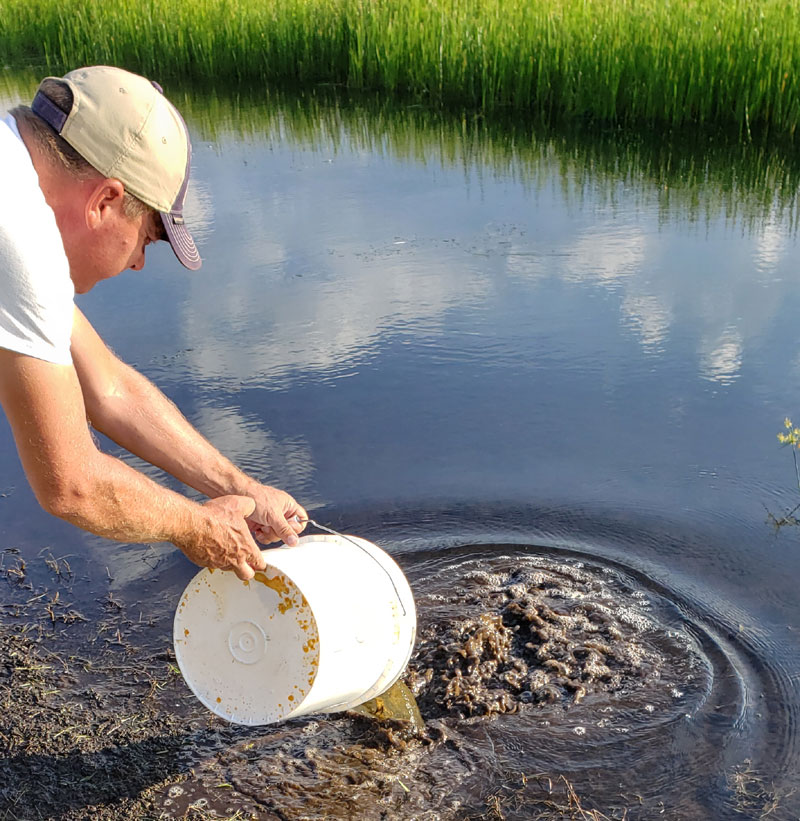
July 18th “End of tomato season.”
It was time to end the tomato production for this season. Any new growth was stunted, and the plants were wilting every afternoon in the mid-nineties heat. I pulled out all of the tomato plants except the cherry tomatoes on the east fence which still seemed to tolerate the heat well.
Knowing there was still potential in the newer growth, I took a chance on my indeterminate heirlooms and cut almost a dozen suckers from the tops and stuck them in a pot of soil in a shady corner. I knew if I could get them through the hot summer heat, they’d produce later this fall. I’ve never done this before and I’m hoping the experiment goes well.
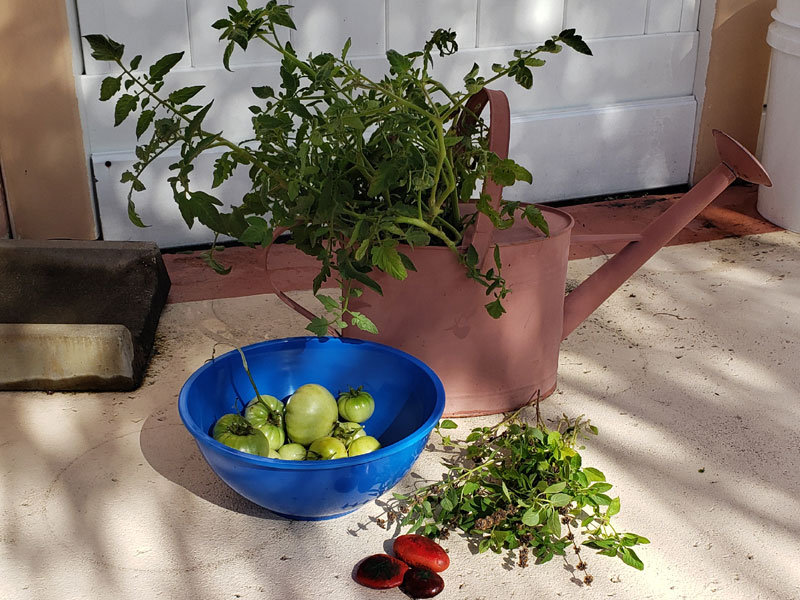
I inspected the tomato roots and found all but one had root knot nematodes infecting them. It was not unexpected since my beets had the same problem growing there the past winter.
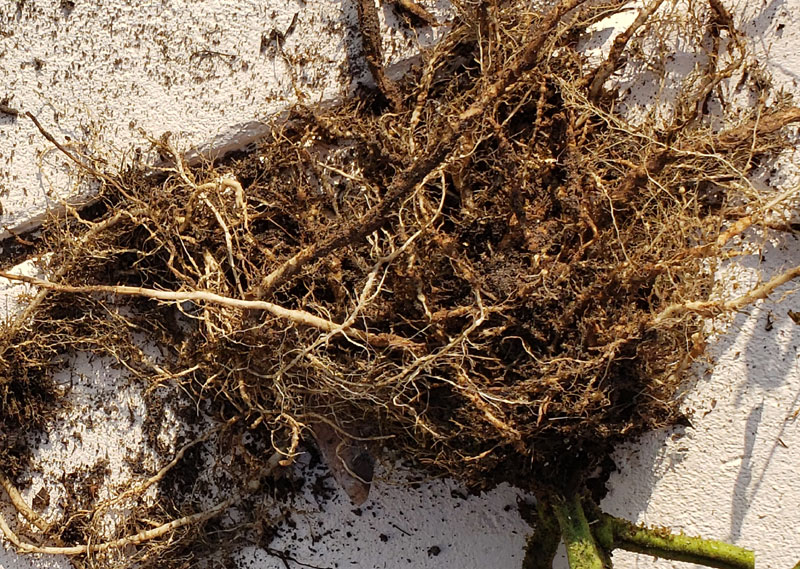
We solarized the soil and will plant beans and some type of companion plants the end of August. The beans will help add nitrogen to the soil. The area will also be amended with some of the rich compost we’ve been making.
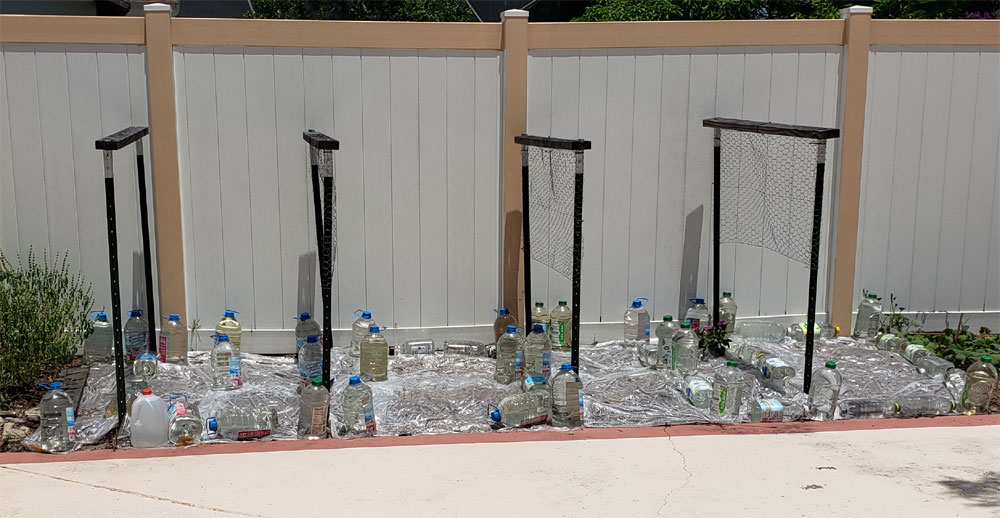
July 22nd “The seedlings are up!”
Most of my seedlings I bought from Hoss are up. The germination rate of the seeds was 98% and proved true. I had also planted butternut squash seeds from a squash we had bought at the grocery store, and some marigold seeds. Marigolds are known for possibly suppressing root-knot nematodes. Plus, they attract beneficial pollinators and add beauty to the garden.
July 24th “Another weekend morning in the garden –sweet!”
We ran a few errands this morning and stopped by the Winter Garden Feed Co. I bought some Blue Lake pole beans and got some great information for the upcoming growing seasons. Check them out on Facebook: https://www.facebook.com/Wintergardenfeedco/.
When we got home, I did some weeding then thinned out the cherry tomatoes which were too overgrown. I also harvested 64 cherry tomatoes.
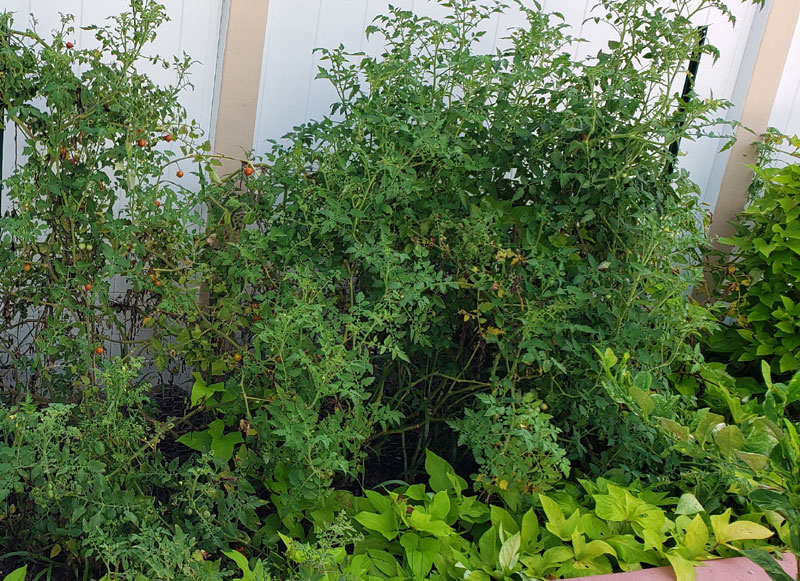
There are sweet potatoes planted next to them and I decided to dig around to see if any were growing yet. This was the sweet potato we had planted back in December of 2019. I gently started digging and followed some purple roots to a wonderful surprise. Within a two-foot by two-foot square I found three full size and three smaller dark purple potatoes!
I had picked up this plant by the side of the road last year. Someone had set it out with the yard waste. Now that I knew it would produce, I needed to research what type of sweet potato I was growing. I determined it is a Murasaki sweet potato. They have beautiful purple skin with white flesh. If you want to learn more about it, check out this link: https://www.gurneys.com/product/murasaki_sweet_potato_
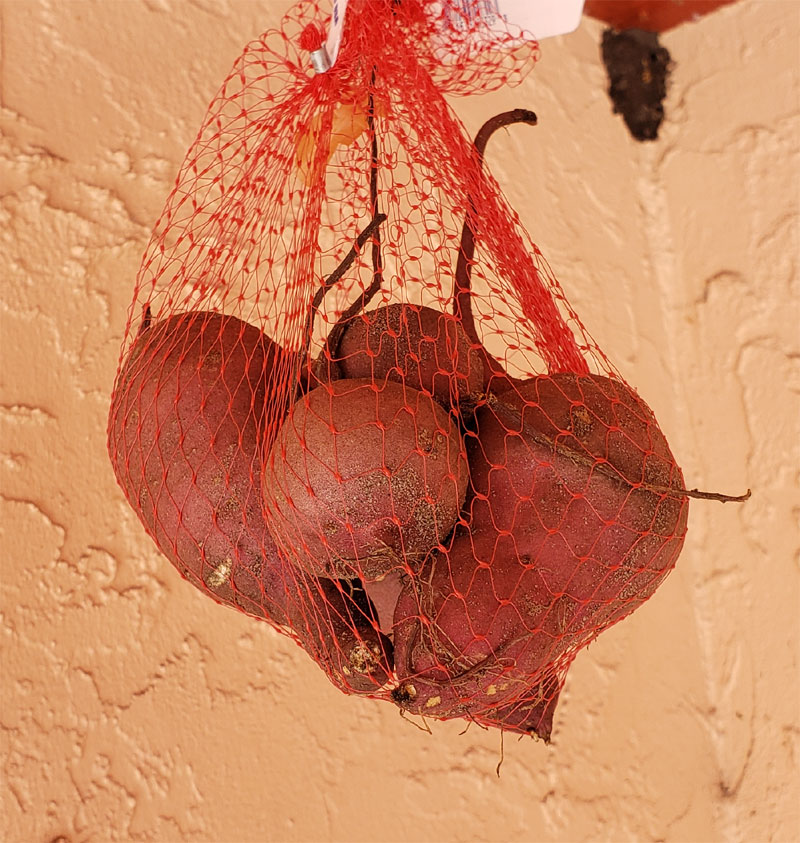
I also learned how to cure sweet potatoes and that you can even eat the nutritious leaves just like spinach! Bonus summer food!
July 25th “A berry good day!”
For the last time this season, I trimmed the blackberry canes and potted 10 canes to propagate. I had accidentally killed off the last batch by covering them with plastic. I was planning to provide more humidity for them, but it was too hot, even inside the house. Not every experiment turns out well. It was a valuable learning experience.
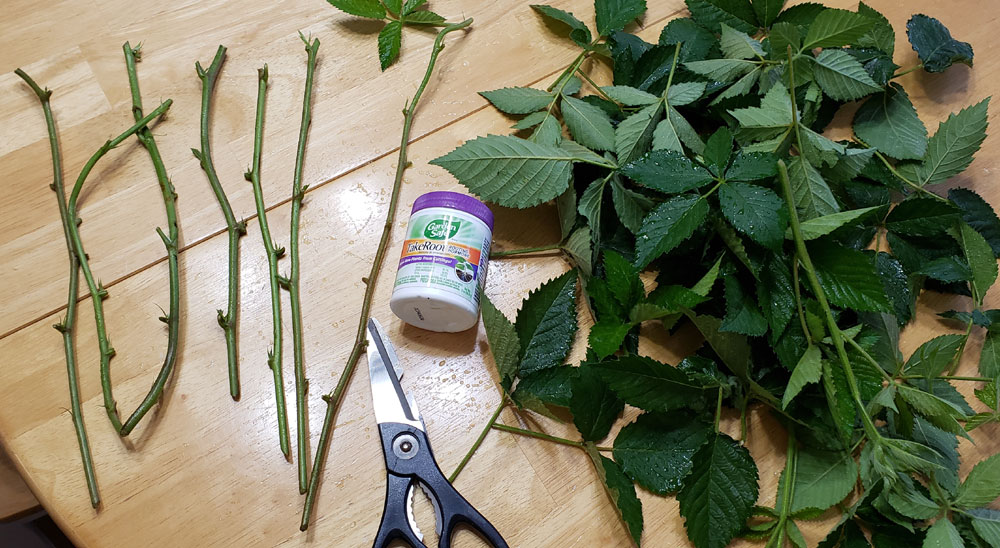
July 31st – “All of my garden has been an experiment this year.”
After reviewing the past seven months, I’ve learned a lot about the soil and growing seasons of Central Florida. It’s been fun and challenging to attempt growing food all year-round. Some of the things I’ve learned include:
- How to solarize soil
- How to compost
- The difference between indeterminate and determinant tomatoes
- Sweet potatoes and jalapenos love heat
- You can grow new tomato plants from suckers
- Canning with a pressure canner is a game-changer
- How to test soil PH and NPK values
- Heirloom tomatoes are the tastiest.
- How to cure garlic and sweet potatoes
- Florida has more pests and diseases than Michigan
You can check out all I’ve learned in my Garden Journal series.
Looking Ahead:
My tomato and cabbage seedlings will soon need potting up. A few more beds need to be prepared for planting the fall crops. I’m mapping out where to plant everything for our fall garden.
I’m also looking forward to picking fresh jalapeno peppers to can more salsa using my tomatoes waiting in the freezer.
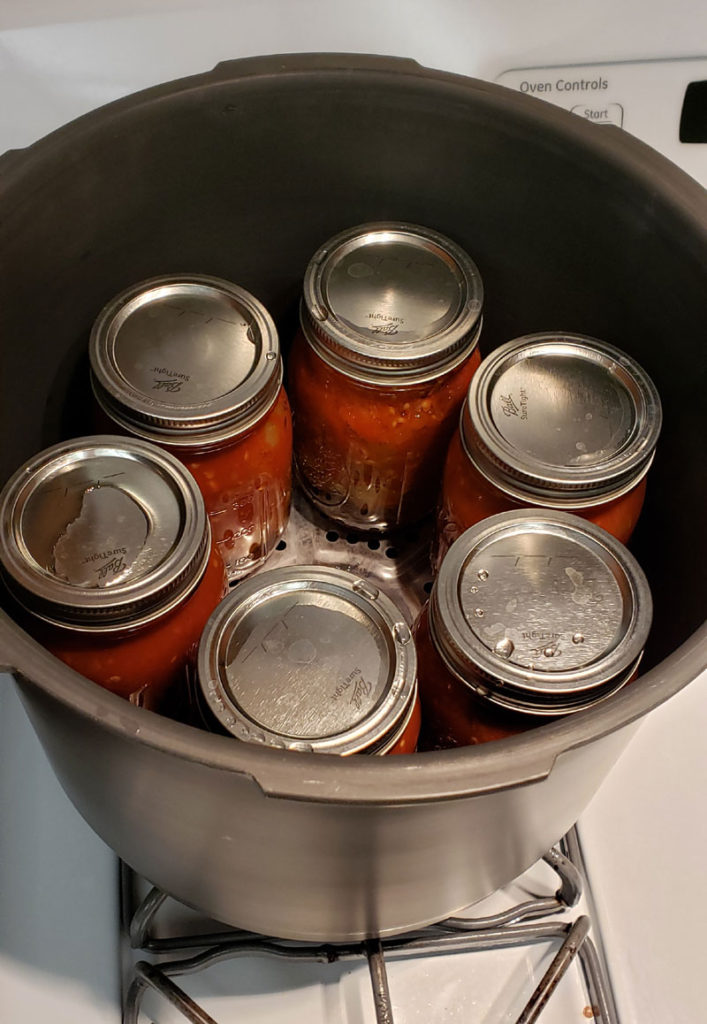
What are you looking forward to in your garden this summer?
Have you planted anything new or are you considering canning for the first time? As you can see from this past month, homestead gardening can be challenging, rewarding, and sometimes surprising.
Have you ever grown a fall garden? I haven’t – until this year. I have high hopes for my pumpkin and squash, not to mention all the green beans I could can. Why not find something you like to eat and try growing in your fall garden? You might be pleasantly surprised at the delicious results!
I enjoy sharing all of our gardening adventures with you. If there’s anything you’d like me to write about, please leave a comment below or email me at: admin@ourfrugalfloridahomestead.com
Thanks for reading and happy gardening!
Alisa